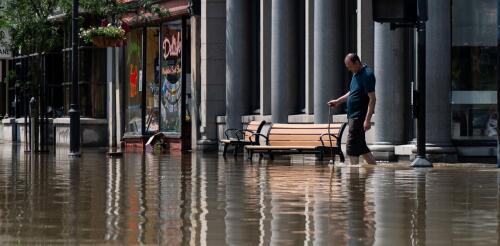Climate change
Capturing carbon dioxide from the air or industries and recycling it can sound like a win-win climate solution. The greenhouse gas stays out of the atmosphere where it can warm the planet, and it avoids the use of more fossil fuels. But not all carbon-capture projects offer the same economic and environmental benefits. In fact, some can actually worsen climate change. I lead the Global CO₂ Initiative at the University of Michigan, where my colleagues and I study how to put captured carbon dioxide (CO₂) to use in ways that help protect the climate. To help figure out which projects will pay off and make these choices easier, we mapped out the pros and cons of the most common carbon sources and uses. Replacing fossil fuels with captured carbon Carbon plays a crucial role in many parts of our lives. Materials such as fertilizer, aviation fuel, textiles, detergents and much more depend on it. But years of research and the climate changes the world is already experienci...
Sea level rise has already put coastal cities on notice thanks to increasing storm surges and even sunny day flooding at high tide. These challenges will continue to grow because global projections point to a mean sea level rise of at least one foot above year-2000 levels by the end of this century. However, many cities are facing another factor making them even more vulnerable to rising waters: land subsidence. The three of us – Pei-Chin Wu, Meng (Matt) Wei and Steven D'Hondt – are scientists at the University of Rhode Island Graduate School of Oceanography working with the U.S. Geological Survey to research challenges facing waterfront cities. Our findings indicate that land is sinking faster than sea levels are rising in many coastal cities throughout the world. By using radar images of the Earth’s surface collected from orbiting satellites, we measured subsidence rates in 99 coastal cities worldwide. These rates are highly variable within cities and from...
Urban agriculture is expected to be an important feature of 21st century sustainability and can have many benefits for communities and cities, including providing fresh produce in neighborhoods with few other options. Among those benefits, growing food in backyards, community gardens or urban farms can shrink the distance fruits and vegetables have to travel between producers and consumers – what’s known as the “food mile” problem. With transportation’s greenhouse gas emissions eliminated, it’s a small leap to assume that urban agriculture is a simple climate solution. But is urban agriculture really as climate-friendly as many people think? Our team of researchers partnered with individual gardeners, community garden volunteers and urban farm managers at 73 sites across five countries in North America and Europe to test this assumption. We found that urban agriculture, while it has many community benefits, isn’t always better for t...
Wet snow pelts my face and pulls against my skis as I climb above 8,000 feet in the Sierra Nevada of eastern California, tugging a sled loaded with batteries, bolts, wire and 40 pounds of sunflower seeds critical to our mountain chickadee research. As we reach the remote research site, I duck under a tarp and open a laptop. A chorus of identification numbers are shouted back and forth as fellow behavioral ecologist Vladimir Pravosudov and I program “smart” bird feeders for an upcoming experiment. I have spent the past six years monitoring a population of mountain chickadees here, tracking their life cycles and, importantly, their memory, working in a system Pravosudov established in 2013. The long, consistent record from this research site has allowed us to observe how chickadees survive in extreme winter snowfall and to identify ecological patterns and changes. Snow piles up on the experiment’s bird feeders. Each chic...
National weather analysts released their 2023 billion-dollar disasters list on Jan. 9, just as 2024 was getting off to a ferocious start. A blizzard was sweeping across across the Plains and Midwest, and the South and East faced flood risks from extreme downpours. The U.S. set an unwelcome record for weather and climate disasters in 2023, with 28 disasters that exceeded more than US$1 billion in damage each. While it wasn’t the most expensive year overall – the costliest years included multiple hurricane strikes – it had the highest number of billion-dollar storms, floods, droughts and fires of any year since counting began in 1980, with six more than any other year, accounting for inflation. 2023’s billion-dollar disasters. Click the image to expand. NOAA The year’s most expensive disaster started with an unprecedented heat wave that sat over Texas for weeks over...



